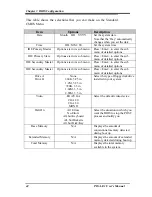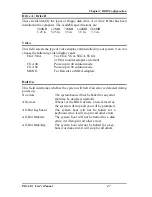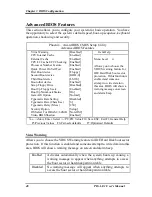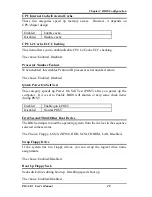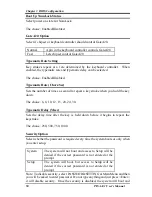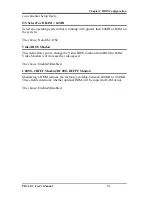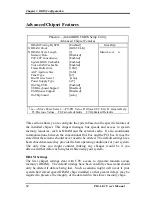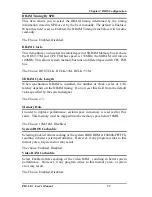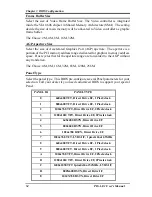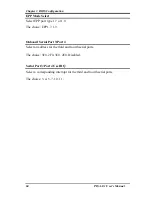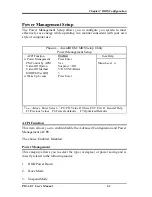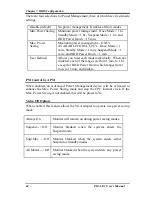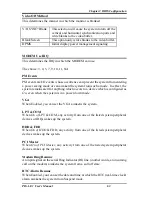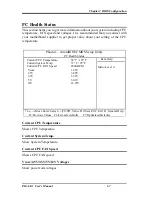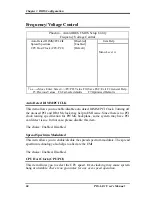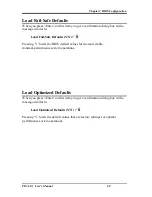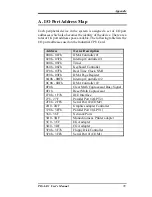
Chapter 3 BIOS Configuration
58
PISA-E1 User’s Manual
IDE Prefetch Mode
The onboard IDE drive interfaces supports IDE prefetching, for faster drive
accesses. If you install a primary and/or secondary add-in IDE interface, set this
field to
Disabled
if the interface does not support prefetching.
The choice: Enabled, Disabled.
Primary/Secondary Master/Slave PIO
The four IDE PIO (Programmed Input/Output) fields let you set a PIO mode (0-4)
for each of the four IDE devices that the onboard IDE interface supports. Modes 0
through 4 provide successively increased performance. In Auto mode, the system
automatically determines the best mode for each device.
The choice: Auto, Mode 0, Mode 1, Mode 2, Mode 3, Mode 4.
Primary/Secondary Master/Slave UDMA
Ultra DMA/33 implementation is possible only if your IDE hard drive supports it
and the operating environment includes a DMA driver (Windows 95 OSR2 or a
third-party IDE bus master driver). If your hard drive and your system software
both support Ultra DMA/33/66, select Auto to enable BIOS support.
The Choice: Auto, Disabled.
Init Display First
This item allows you to decide to active whether PCI Slot or AGP first
The choice: PCI Slot, AGP.
IDE HDD Block Mode
Block mode is also called block transfer, multiple commands, or multiple sector
read/write. If your IDE hard drive supports block mode (most new drives do),
select Enabled for automatic detection of the optimal number of block read/writes
per sector the drive can support.
The choice: Enabled, Disabled
Onboard FDC Controller
Select Enabled if your system has a floppy disk controller (FDC) installed on the
system board and you wish to use it. If you install and-in FDC or the system has
no floppy drive, select Disabled in this field.
The choice: Enabled, Disabled.

